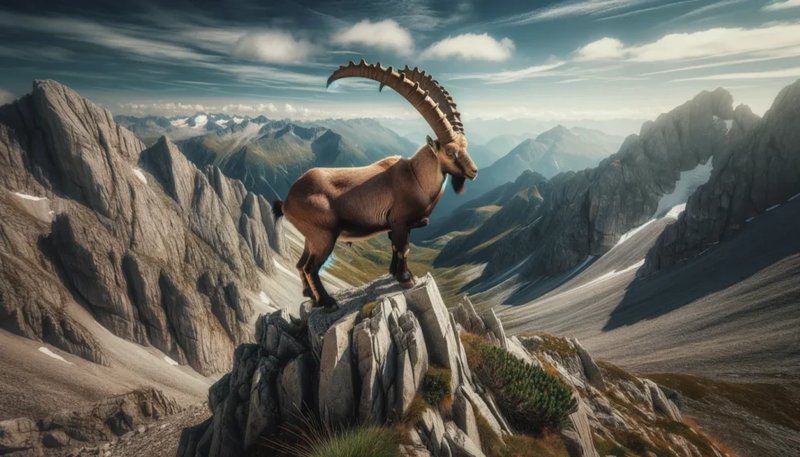
The presence of the ibex in culture and folklore isn’t surprising. It embodies resilience and strength, characteristics that resonate with many people. From ancient legends to modern interpretations, its story is rich and varied. Let’s dive into how the ibex shows up in different cultural narratives, exploring its significance and symbolism.
Historical Significance of the Ibex
The ibex has been part of human history for thousands of years. In ancient times, it was often depicted in cave paintings, especially in regions where these animals thrived, such as the mountains of Europe, Asia, and North Africa. The bold image of the ibex, often part of hunting scenes, reflects the relationship between early humans and wildlife.
These visuals tell stories of survival and conquest, showing how vital the ibex was for food, clothing, and tools. Beyond its physical importance, the animal began to symbolize agility and the spirit of adventure. People looked at the ibex and saw traits they admired—fearlessness and the ability to overcome obstacles, much like they had to in their daily lives.
The Ibex in Mythology
Many cultures have woven the ibex into their myths and stories. In Greek mythology, the ibex is often associated with the god Pan, who was believed to have the horns and legs of a goat. Pan embodies nature and rural life, emphasizing the connection between humans and the wilderness. His portrayal alongside the ibex highlights the animal’s representation of untamed freedom and the wild spirit of nature.
Similarly, in Middle Eastern folklore, the ibex appears in several stories, symbolizing nobility and strength. It’s often depicted as a guardian or protector, embodying the qualities of loyalty and resilience. These tales showcase how the ibex moved from being just a creature of the mountains to a spiritual symbol that resonates with various identities and beliefs.
Artistic Representations of the Ibex
The ibex has inspired countless artists throughout history. From ancient pottery to modern sculptures, its distinctive shape and striking presence are hard to ignore. In traditional art forms, you often see the ibex stylized to emphasize its horns, showcasing its beauty and strength.
Take, for example, the famous artwork from the Altamira caves in Spain, where artists depicted animals in vibrant colors. The ibex, with its powerful stance, stands out as a testament to human creativity and the need to capture the world around them. These representations serve as a bridge between our current understanding and what once was, emphasizing the ibex’s importance throughout human history.
Folklore and Local Legends
In various regions, the ibex emerges in local legends that explain natural phenomena or moral lessons. For instance, in some Alpine folklore, the ibex is seen as a messenger between humans and the gods. There are tales where the animal leads lost hikers back to safety or helps farmers find their way in difficult circumstances. These stories not only celebrate the ibex but also reinforce the importance of respecting nature and the environment.
Some legends even portray the ibex as a trickster, showcasing its cleverness in escaping danger. This dual nature reflects human traits—sometimes we must be bold and unwavering, while other times, we must be cunning and adaptable. By telling these stories, communities emphasize values and lessons that resonate deeply within their cultures.
The Ibex in Modern Culture
Today, the ibex continues to be a powerful symbol in modern culture. You might see it in logos, fashion, or as a motif in various forms of media. It represents endurance and perseverance, often inspiring athletes and adventurers who look for motivation in the wild.
Moreover, environmental movements have adopted the ibex as a symbol of wildlife conservation. As habitats shrink and species become endangered, the ibex serves as a reminder of the need to protect our natural world. Campaigns often use the image of the ibex to connect emotionally with people, encouraging them to take action for the environment.
In many ways, the ibex is more than just a mountain goat; it embodies human emotions and aspirations. Its representation in culture and folklore is a reminder of our connection to nature, the resilience we need in our lives, and the stories that have shaped us.
From ancient myths to contemporary art, the ibex remains a significant symbol across cultures. Understanding its importance helps us appreciate not just the animal itself, but also the values it represents. So, the next time you spot an ibex—whether in a picture, a story, or even in the wild—take a moment to reflect on the rich tapestry of meaning woven around this remarkable creature.

